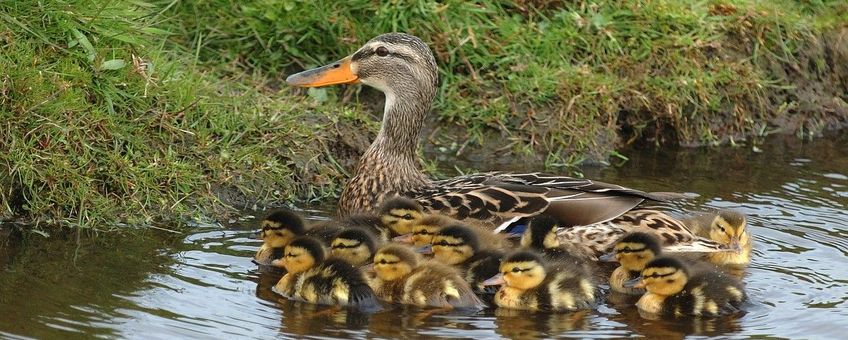
'Dr. Duck' and the missing ducklings
Netherlands Institute of Ecology (NIOO-KNAW)Erik Kleyheeg's nickname - Dr. Duck - is well-earned. He became fascinated with mallards as he was doing his PhD research, and that's also when he first observed that the species was struggling. "That really surprised me", he says.
The research project Kleyheeg is currently working on concerns bird flu, but he has started another project in his own time to solve the mystery of the disappearing mallards for once and for all.
Declining number
A report from the Dutch Centre for Field Ornithology, Sovon, confirms what Kleyheeg had already observed for himself: mallards may be the Netherlands' most common duck species - found even in urban parks and residential areas - but they're in decline.
Compared to the early 'nineties, the decline is about 30% according to Sovon, which means that some 100,000 breeding pairs have gone missing.
Duckling stage
The cause of the decline is as yet unknown. But researchers from Sovon and NIOO's Centre for Avian Migration and Demography have largely excluded duck hunting and a reduction in breeding success as possible culprits.
That leaves the duckling stage as the period when something is most likely to happen. In other words: it would appear that fewer ducklings now make it to adulthood than before.
Citizen science
Last year, Erik Kleyheeg appealed to the public to send him their observations: how many ducklings did they see, and roughly how old?
The response was overwhelming. And what those observations demonstrated, was that from the third week after they had left the nest, the numbers of ducklings appeared to plummet: only one in four ducklings was left.
Tracking over time
Now that the new season has started, 'Dr. Duck' is once again hoping that people in the Netherlands will send him their observations. And this time, he'd specifically like them to track the duck families they see over time.
Repeated observations of the same family will allow him to include situations in which the mother duck ends up alone without any ducklings at all - something that wouldn't have been covered last year.
Possible causes
Meanwhile, some theories are beginning to emerge when it comes to establishing the cause of the decline. Among them is predation: the number of predators in the Netherlands that feed on ducklings has gone up significantly since the early 'nineties.
Another possibility is that interbreeding of mallards and domestic ducks has left the ducklings vulnerable - replacing their protective yellow-and-brown striping with easy-to-spot bright yellow. And finally climate change - in particular late cold spells - could wreak havoc during this stage in the ducks' development.
Helping out
Anyone interested in helping out 'Dr. Duck' this spring can go to his website, www.erikkleyheeg.nl/eendenkuikens.
"All you have to do is fill in the location, the date, the number of ducklings and roughly how old they are." Maybe the mystery of the missing ducklings will finally be solved.
Text: Netherlands Institute of Ecology (NIOO-KNAW)
Photos: Piet Munsterman, Saxifraga; Bart Vastenhouw, Saxifraga

